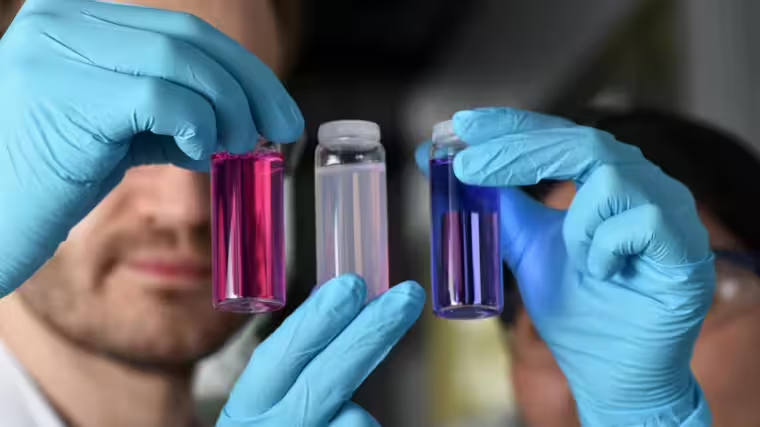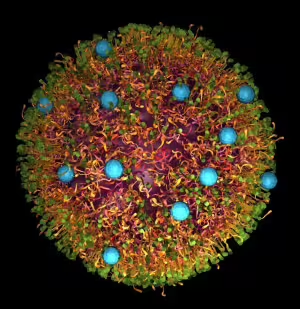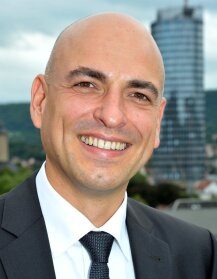
Published: | By: Renée Dillinger-Reiter
Researchers at the University of Jena have succeeded in producing highly specific nanoparticles that transport their active ingredient load to liver or kidney tissue in a targeted manner depending on groundbreaking dyes.
Graphic: Anja TrägerThe Carl Zeiss Foundation is funding a joint research project by the universities of Mainz and Jena, together with their medical centers, for five years with a total of approximately six million euros. The aim of the project, “Nano@Liver,” is to use nanoparticles to transport active substances specifically to different liver cells. This approach seeks to make liver diseases treatable and improve the therapeutic modulation of immune reactions in the liver.
Through “Nano@Liver,” the participating research groups aim to harness the unique properties of liver cells for innovative therapies and optimize the targeted delivery of medications. This endeavor aspires to achieve a scientific breakthrough in nanomedicine and precision drug therapy. The research focuses on nanoparticulate drug carriers designed for liver-cell-specific therapies as part of the first cross-state collaborative project between Mainz and Jena.
The project is funded under the Carl Zeiss Foundation's "Breakthroughs" program with approximately six million euros over the next five years. “One of the biggest challenges in pharmacology is the imprecise distribution of drugs in the body, which leads to unintended side effects in other organs,” explains Prof. Dr. Stephan Grabbe, Director of the Department of Dermatology at the University Medical Center Mainz, who co-leads the project with Prof. Dr. Ulrich S. Schubert, Director of the Jena Center for Soft Matter (JCSM) at the University of Jena. He elaborates, “With nanoparticles, we can address this issue by transporting active substances specifically to certain cells in the liver. This not only enhances therapeutic efficiency but also opens up new treatment options.”
The Paradox of Targeted Nanoparticles
The liver is a particularly promising target organ for the use of nanoparticles because it consists of highly heterogeneous cellular tissue and can generally be targeted effectively. However, it has become apparent that, despite promising approaches, only a small fraction of nanoparticles actually reach the intended target cells. The “Nano@Liver” project is therefore investigating how nanoparticles can be specifically modified to address different cell types in the liver. Such cell-specific therapy would enable more targeted treatment of liver diseases such as fibrosis, inflammation, and even tumors, while also leveraging the liver’s immunoregulatory function.
In addition to the targeted release of active substances, the research team is relying on artificial intelligence (AI). Using AI models, the researchers aim to precisely predict the distribution of nanoparticles in the body to further optimize therapies. “Our AI-driven models are a real breakthrough because they allow for exact predictions of how nanoparticles behave in both healthy and diseased organisms,” emphasize Stephan Grabbe and Ulrich S. Schubert.
Interdisciplinary and Inter-University Research
The interdisciplinary Mainz-Jena project team brings together expertise in chemistry, biochemistry, artificial intelligence, immunology, and medicine—an excellent foundation for deciphering and advancing the processes critical to the targeted placement of nanoparticles. The collaboration between Mainz and Jena, supported by renowned institutions and research-oriented companies, creates a solid basis for achieving the ambitious goals of the project.
The “Nano@Liver” project will not only promote scientific exchange between the two locations but also drive forward fundamental research and provide significant impulses for applied medicine. “Through this project, we will further strengthen the strong tradition of nanomedicine and research translation at both locations. Our goal is to build a sustainable research alliance that sets global benchmarks,” affirm the two project leaders, Ulrich S. Schubert and Stephan Grabbe.
Contact (in Jena):
This text is a translation of the original German version. The original text can be found here de(in German).

